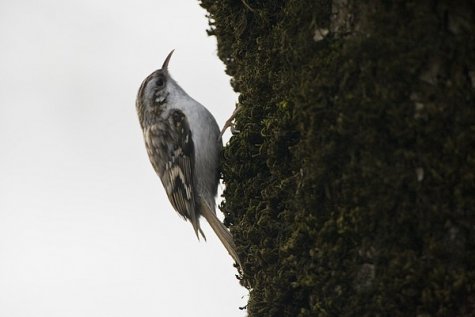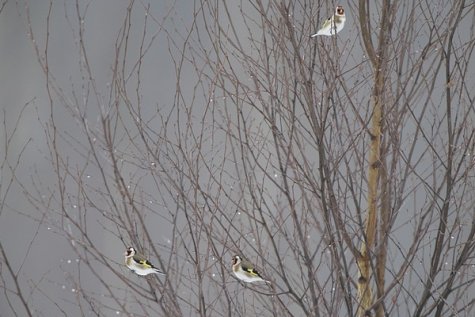How are our winter birds doing?
Text: Jaanus Elts, Estonian Ornithological Society
Photos: Arne Ader
Translation: Liis
Another season of winter bird counts has started. Census reports as well as the first winter index of farmland birds is on the Society’s home page: http://www.eoy.ee/sites/default/files/tegevused/tvl/TLL2012.pdf (in Estonian; numerous graphs)
Winter conditions for the birds significantly affect the nesting success and the bird populations as a whole. The larger the number of birds that die in a severe or changeable winter the smaller is the number of pairs to nest in spring. If a severe winter will last exceptionally long it exhausts the birds, they start nesting later than normal and the clutches too will be smaller.
Between 1987 to 2011 numbers could be considered stable for nine terrestrial or land birds in winter; numbers rose for five, and fell for seven species.
Greenfinch
During winters over the past 25 years the number of greenfinches has increased moderately. The index also clearly reflects the outbreaks of diseases among the greenfinches which stopped the rise in numbers that had taken place for several years. Last winter the abundance of the species increased again.
The number of jackdaws has increased moderately but after a maximum number in 2008 it has declined steadily.
The abundance of jays in winter has increased, evidently the estimate is influenced by the recent great invasion in autumn 2009.
The winter abundance of nuthatches is not great but they occur in many places and thus the moderate rise in their numbers can easily be observed.
The winter abundance of blackbirds has increased moderately but their abundance was clearly larger at the turn of the century; the abundance increased last winter.
Treecreeper
The abundance of treecreepers, hooded crows, ravens, great spotted woodpeckers, blue tit, crested tit, great tit, tree sparrows and bullfinches has been stable. Regarding the last-named species there was a very strong invasion in 2000.
Regarding the hooded crow it is worth noting that its abundance has fallen in the last four years.
The number of ravens rose during nearly ten years and reached a maximum in the Christmas survey of 2010, but last winter it fell markedly.
The great spotted woodpecker characteristically has invasions depending on so-called cone years. This showed particularly clearly at the end of 2008 when the abundance index was up to three times higher.
Goldfinches
A falling abundance has been found for goldfinch, domestic pigeon, marsh tit, willow tit, house sparrow, magpie and goldcrest. The last-named species is very sensitive to severe winters and its abundance fell to a very low level in the winter of 2009/2010 (the abundance index was only 0,13). The abundance of the species was nearly as low in the winter of 2001/2002.
The number of goldfinches had a maximum in the beginning of the 1990’s, but during the last four years the number has been very low.
The numbers of domestic pigeons and magpies have been high in the first years of the winter bird counts, fell significantly during the second half of the 1990’s, but has remained stable over the last ten years.
All new winter observers are welcome! Instructions for the winter bird counts are on the Society’s home page; additional information is available from:











